With over 34,000 types of fish in the world, it can be hard to keep track. We’ve found 20 fish that start with V. These water-dwelling creatures live all throughout the world and many will leave you speechless with their jaw-dropping coloring and patterns!
1. Vagabond Butterflyfish
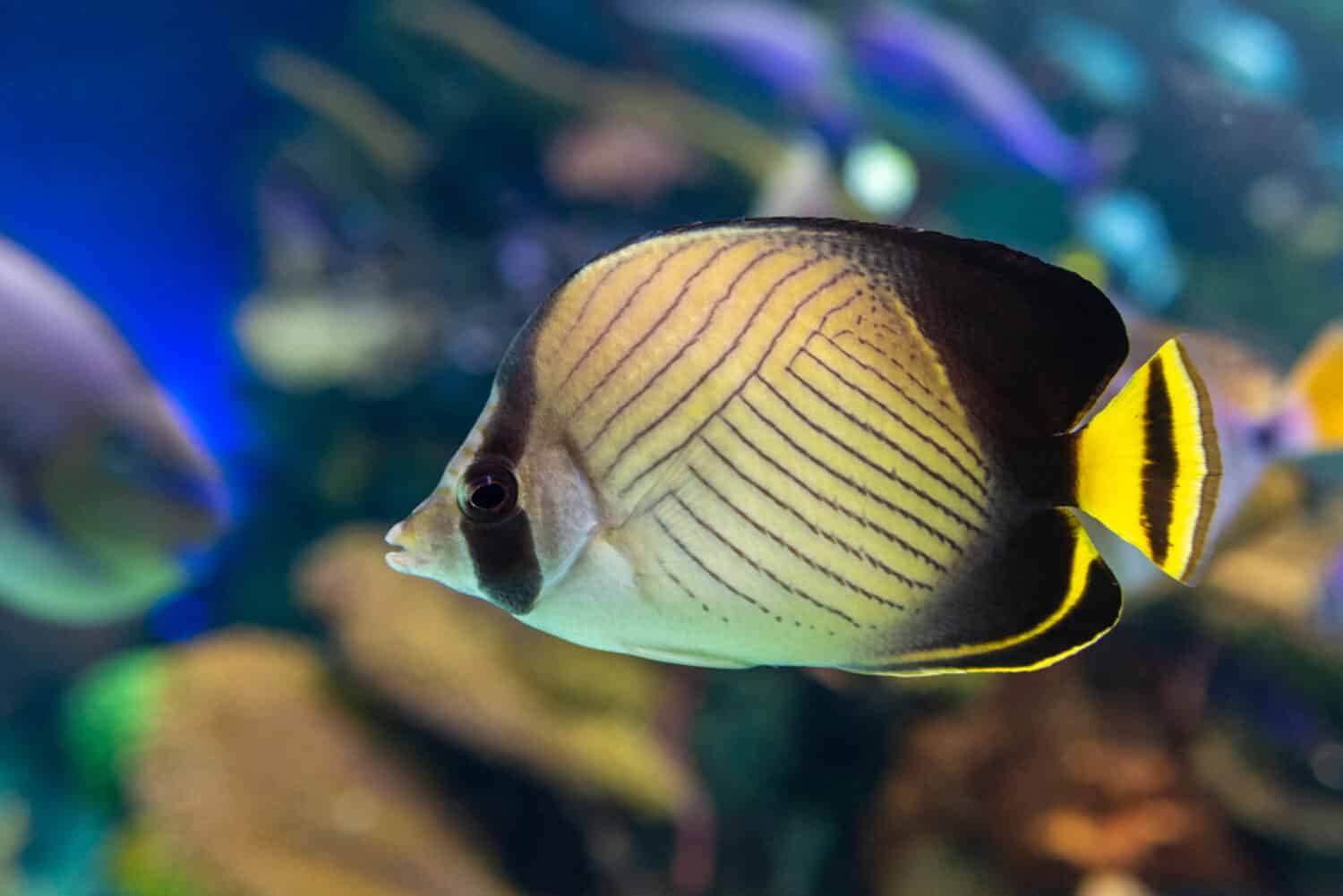
Vagabond Butterflyfish are often part of aquariums.
©Miroslav Halama/Shutterstock.com
The Vagabond Butterflyfish has a white body covered in two parallel patterns of thin, black lines. The interorbital region is divided by horizontal yellow bands and a wide black strip. There are two black bands: one running across the caudal fin and one at the back of the body.
The caudal, anal, and soft dorsal fins are all yellow. The Vagabond butterflyfish live in lagoons and coral reefs, frequently in regions with considerable visibility and freshwater inflows. Typically, this fish is found in pairs or in small groups.
Algae, coral polyps, anemones, and polychaete worms make up the food it likes to eat.
2. Vermillion Rockfish
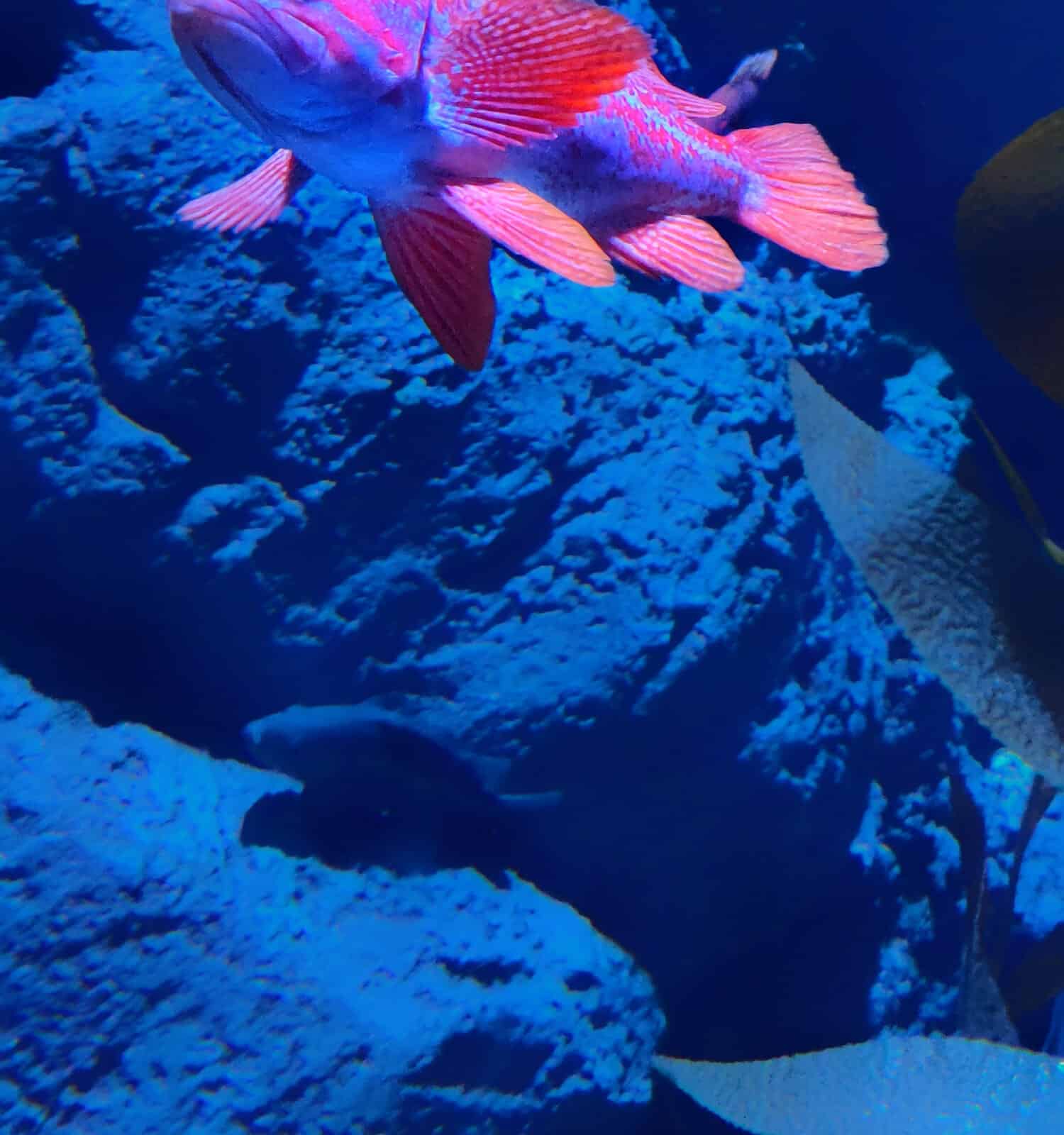
There are over 100 types of rockfish.
©Abhishek iyyer/Shutterstock.com
A vermilion rockfish has a shortened, somewhat broad body. The lower jaw is somewhat protruding from the relatively bent head. The bottom jaw and mouth of a vermilion are scaly. Adults can be brown, mustard yellow, bright yellow, red, orange, or maroon underwater.
The sides of most adults of this species typically have some gray or black mottling. Their eyes are surrounded by three dim orange bands. You can find this fish in a variety of places including Zaikof Bay, Montague Island, and Baja California.
Mature vermilion rockfish live in water depths ranging from 20 to 1,440 feet, with 165 to 495 feet being their most frequent range. Vermillion rockfish of all ages congregate on sandy bottoms.
3. Violet Damsel
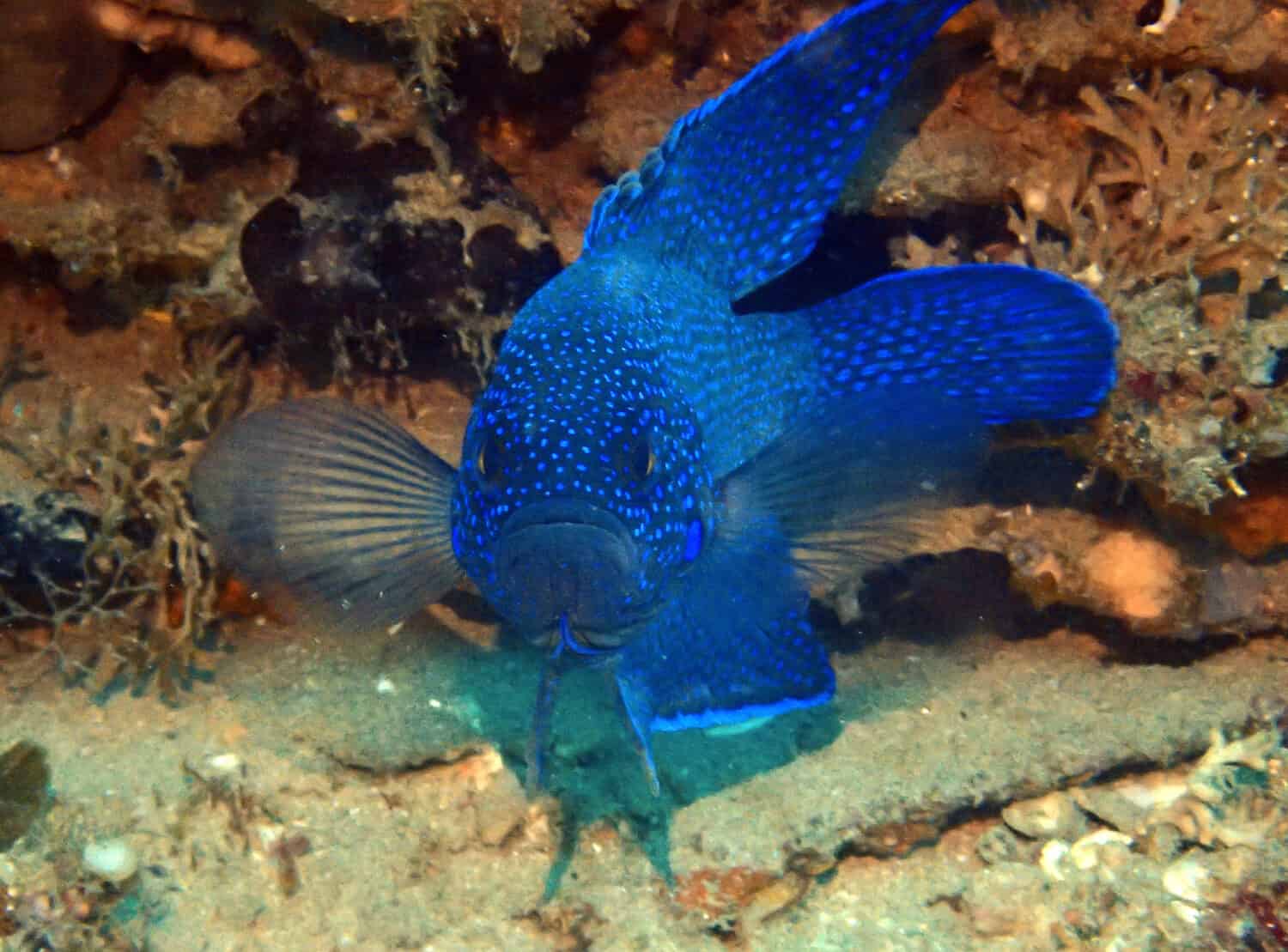
Perhaps they get the nickname “Blue Devil” from their angry appearance.
©katherineobrien/Shutterstock.com
A captivating fish with bright purple and blue scales is the violet damsel. The sky blue damsel, sapphire devil, or blue devil are other names for this marine fish. The Indian and Pacific waters are typically the only places where one can see this beauty, yet if you’re fortunate, you might discover one waiting to return to an aquarium.
The violet damsel does not require a lot of specific care, but because of their hostile nature, tankmates should be cautiously chosen. The violet damsel is a little fish, so it doesn’t require a huge tank, but it does require very clean, well-maintained water.
4. Violet Goby
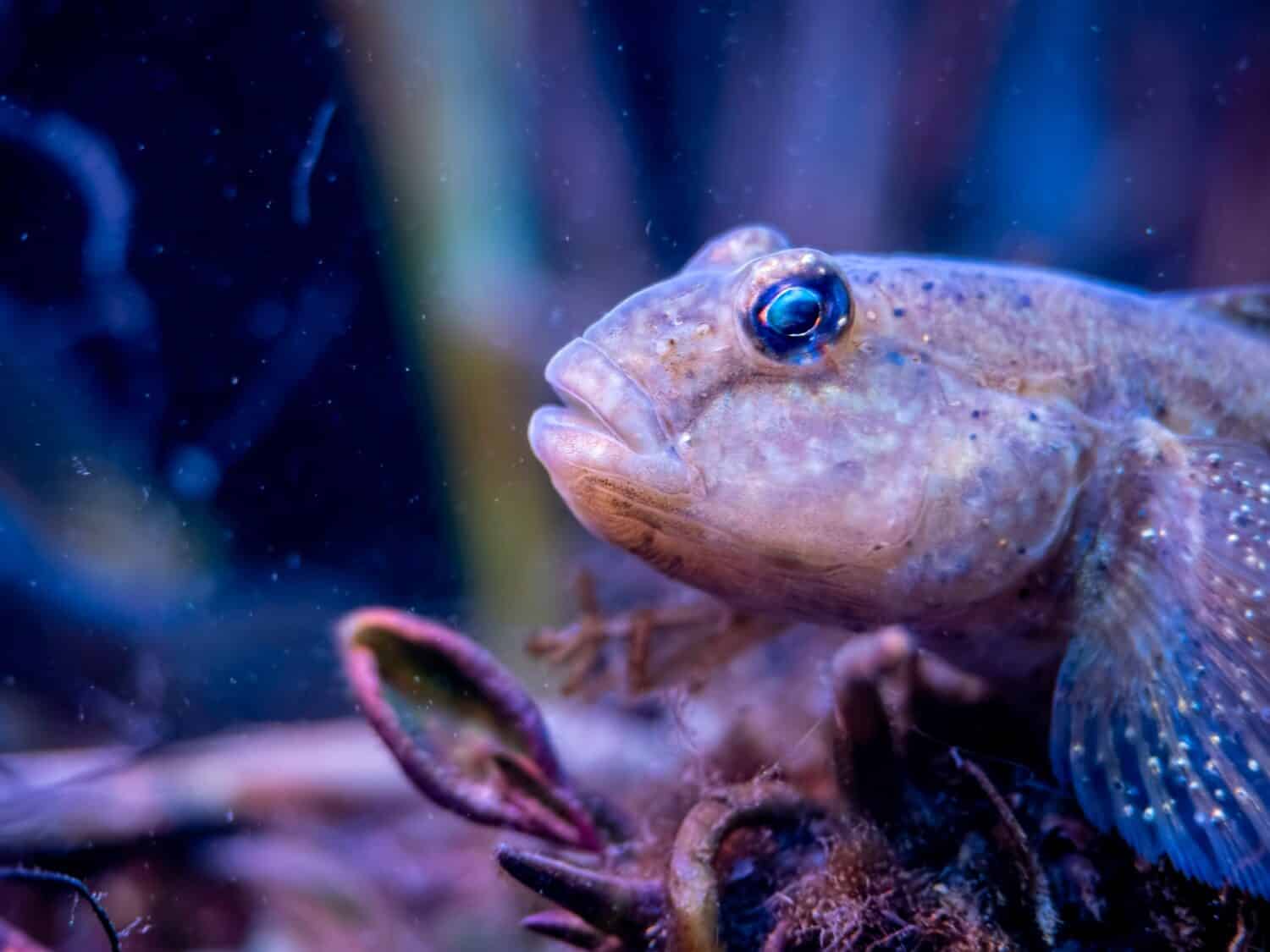
Gobbies prefer to stay at the bottom of a tank.
©Dr. Victor Wong/Shutterstock.com
The violet goby has a very long, eel-like form that is dorsally colored in a range of grays to purples but is brighter on its bottom side. They go by the name “dragonfish” as well. The carnivores known as dragonfish are falsely thought to be fish that are hostile. Ironically, it’s these fish who are bullied.
Along the entire length of the body, there are a number of noticeable dark chevrons. The pelvic fins join together and their mouth is big and turned upwards. A marine species called the violet goby lives in murky bays, harbors, lagoons, wetlands, and coastal streams.
This species is capable of burying its entire body in mud. It is a native of the swampy waters surrounding Florida and the Gulf of Mexico and enjoys brackish water.
5. Velvet Whalefish
One of the most striking members of deep-sea whalefish is the velvet whalefish. It mainly lives in the Pacific Ocean around Japan and New Zealand, but it can be found across the tropical and temperate regions of the oceans around the globe.
Similar to other whalefish, it has an appearance that resembles a whale, short pectoral and pelvic fins, and dorsal and anal fins that are positioned very far back. The vivid crimson color that covers every inch of this fish’s body is the feature that stands out the most.
The name comes from the velvety texture created by the tiny spicules that encase their entire body and fins.
6. Vanjaram
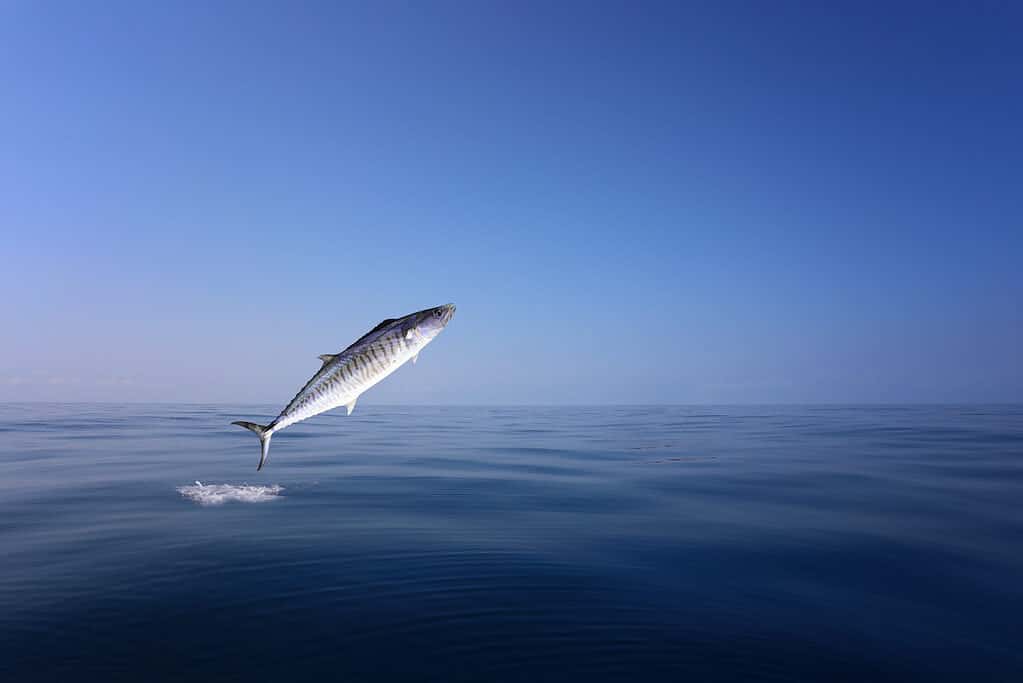
King mackerel tend to have a narrower body than other types of mackerel.
©Stock2468/Shutterstock.com
Vanjaram, also known as the Indo-Pacific king mackerel is a popular fish for eating. This fish has been known to jump out of the water when caught and may reach up to 100 pounds in weight. India, Sri Lanka, and Bangladesh are just a few of the nations on the Indian subcontinent where vanjaram is particularly well-liked.
Most of the world views this pricey fish as a delicacy. The sides of the vanjaram are shimmering white with a few irregular longitudinal columns of spherical, dark brownish dots dispersed across the lateral line.
The majority of the sardine and anchovy schoolings that the Indo-Pacific king mackerel eats are tiny. They also enjoy eating crabs and squid.
7. Virgin Spinedace
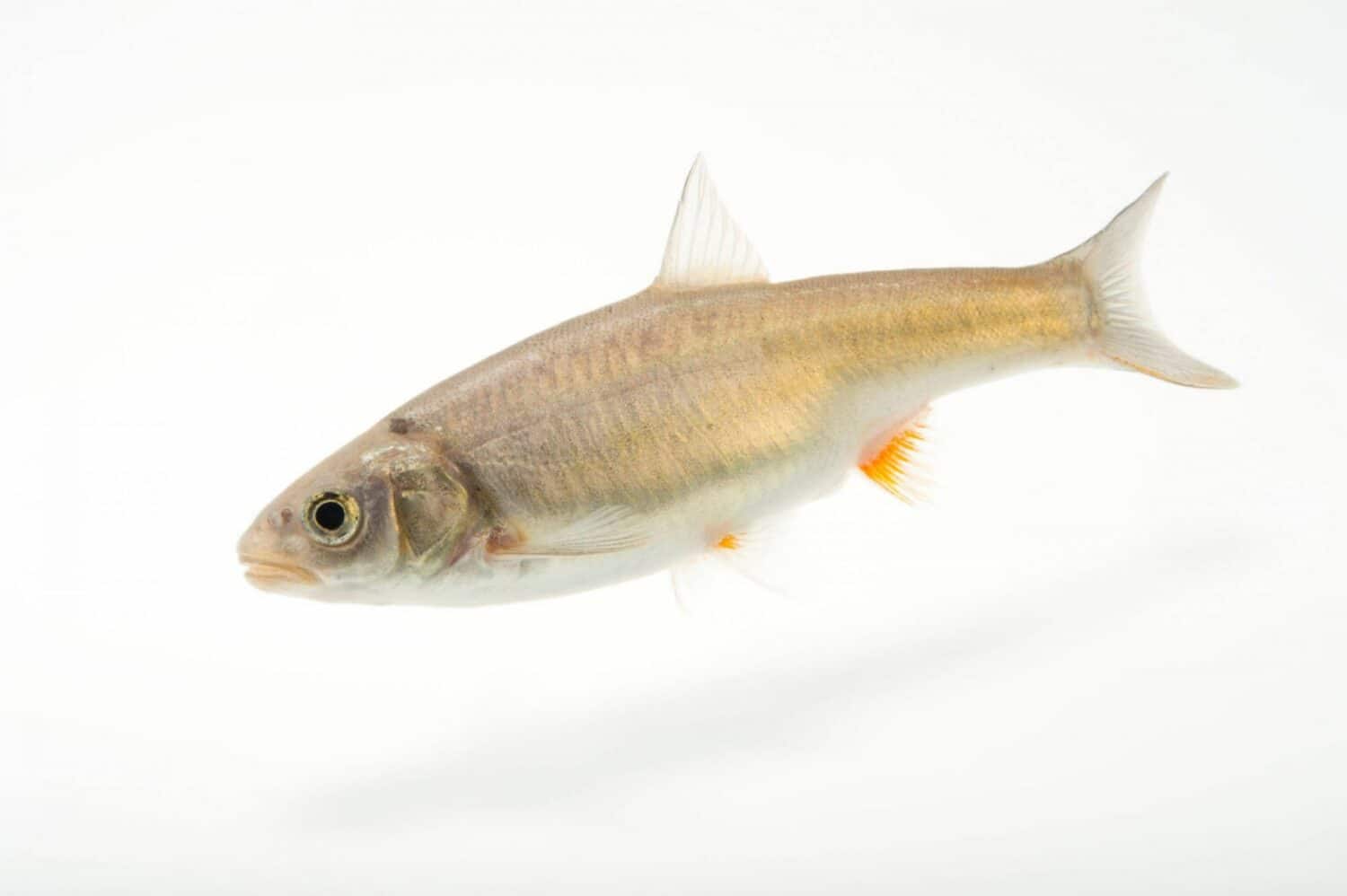
The Virgin Spinedace is the smallest fish on this list.
©Usha Roy/Shutterstock.com
A moderate-in-size silver minnow, the Virgin River spinedace was previously widespread across the Virgin River basin. The spinedace gets its name from the fact that the initial two of its eight rays on the exterior are hard, spiny, and only slightly attached.
The Virgin Basin is experiencing an increasing water deficit brought on by misuse, dryness, and climate change, which has resulted in the spinedace disappearing from over 50% of its historical habitat.
In order to ensure the survival of the spinedace and other wildlife that call the Virgin River home, the Center for Biological Diversity initiated an effort to Save the Virgin River in 2012 and filed a petition with the Endangered Species Act for the preservation of the spinedace.
8. Victoria Stonebasher
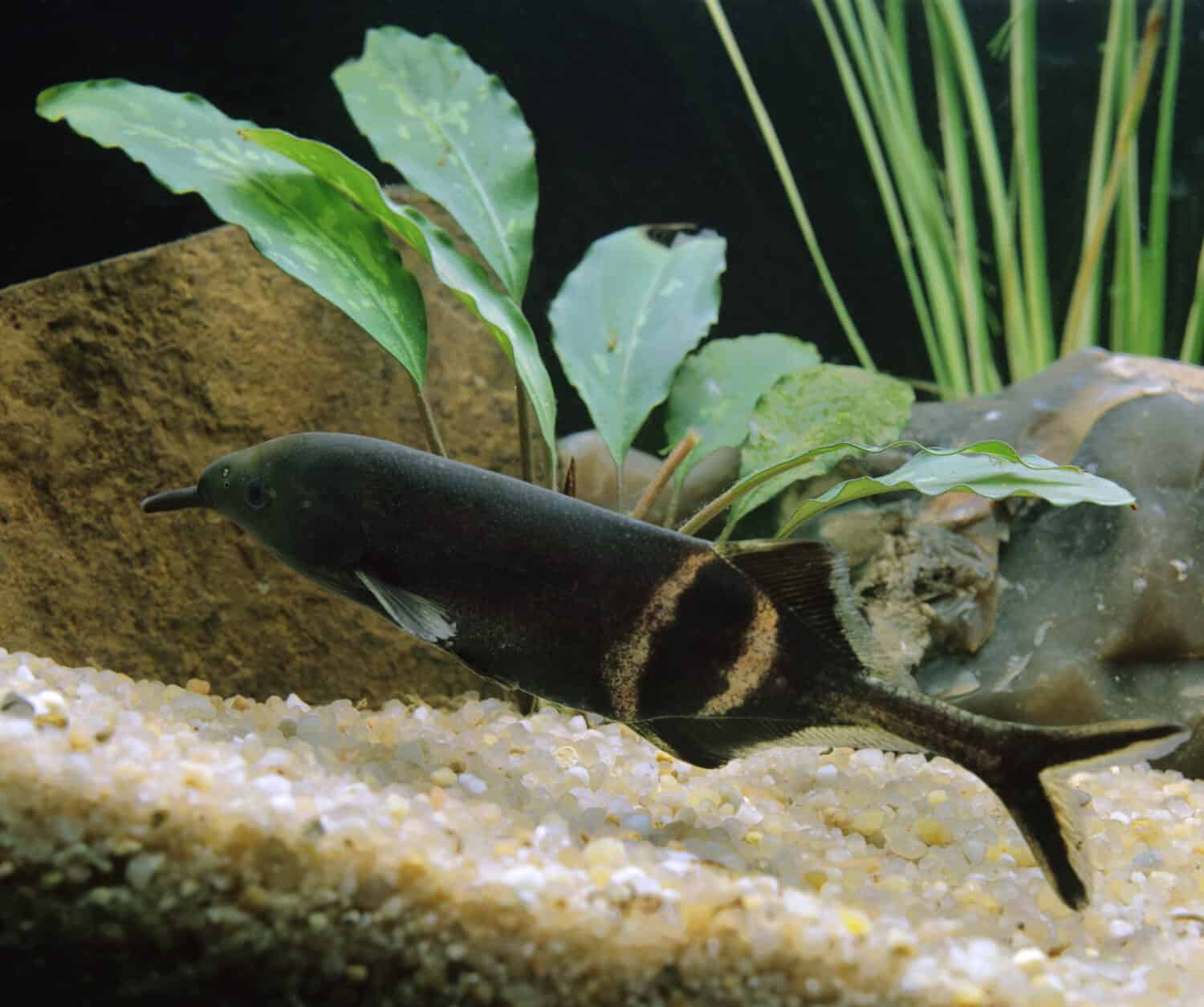
The
Elephant
Nose Fish is also part of the Mormyridae family.
©slowmotiongli/Shutterstock.com
A ray-finned species of fish in the Mormyridae family is the Victoria stonebasher. It can be discovered in Kenya, Tanzania, Uganda, and Rwanda. Rivers, bogs, freshwater lakes, marshy areas, and inland floodplains make up its natural environment.
The Victoria stonebasher is listed as Endangered (EN), meaning there is an extremely high probability that it will go extinct in the wild. Despite popular belief, this fish did not get its name from Queen Victoria.
Instead, the Victoria stone basher received its moniker from being discovered in Lake Victoria!
9. Volga Undermouth

There are over 2,200 cyprinid freshwater fish.
©Joan Carles Juarez/Shutterstock.com
The Volga undermouth is a freshwater fish. This individual resides in the Don River riverbed of the Black Sea basin as well as multiple other drainages in the same area. Although it lives in rivers, this fish can be observed in reservoirs.
The fish favor long rivers that have powerful currents, especially ones that have rapid. The Volga undermouth live in rivers distributed in lowland and foothill regions. Although larvae and juveniles have a dominant mouth, by the time they are three to four months old, they switch to an undermouth and begin grazing the bottom of the waterway, where they consume benthic diatoms and debris from hard soil.
10. V-Lip Redhorse
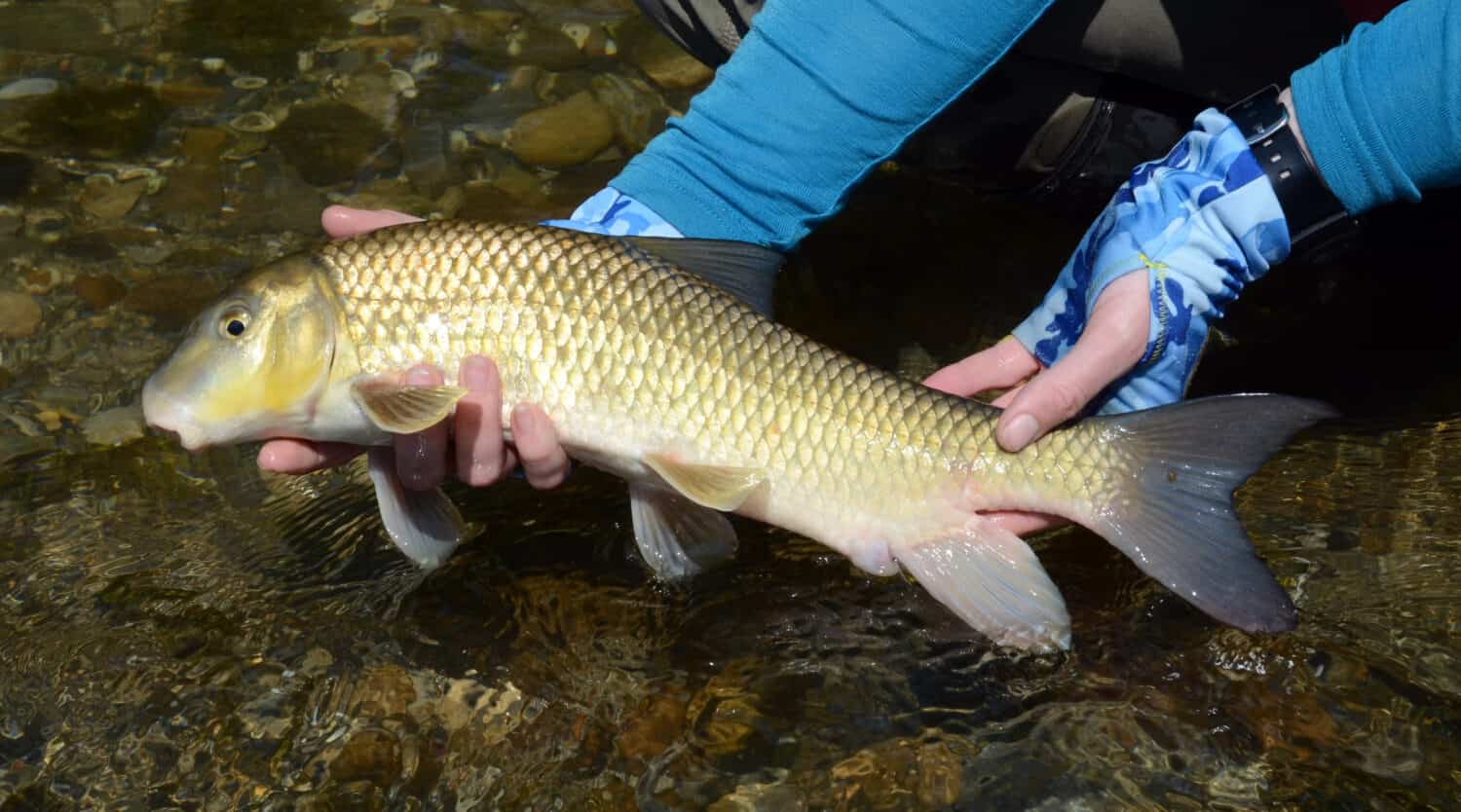
These fish prefer to live in rocky rivers.
©M Huston/Shutterstock.com
Adult V-lip Redhorses have a lengthy body with a thin shape, measuring nine to 13 inches long. The lower lip of these fish has a V shape and a surface that is coarsely papillose. The dorsal fin typically has 12 or 13 dorsal rays and is fairly concave.
A V-lip redhorse’s back is an olive color and is often accompanied by a silver shine. With black scale bases, the sides of this fish are brassy, gold, or platinum. The caudal and anal fin tips may be somewhat red.
11. Vancouver Lamprey

Vancouver Lamprey has been under threat in the past.
©Rostislav Stefanek/Shutterstock.com
A collection of ancient fish called Vancouver lampreys has existed for at least 350 million years. They are a long, lean species that resemble eels, but as opposed to eels, they lack jaws and scales, and their bones have been replaced by cartilage.
Potentially over 10,000 eggs are produced by one Vancouver lamprey, which hatch into larvae in two to three weeks. The larvae, which resemble worms, linger in the substrate and eat fine-textured organic matter.
They continue doing this for five or six years before transforming into mature lampreys, after which they pass the winter in gravelly places before spending a year feeding in lakes. After that, they come back to rocky places to spawn.
12. Vampire Pleco
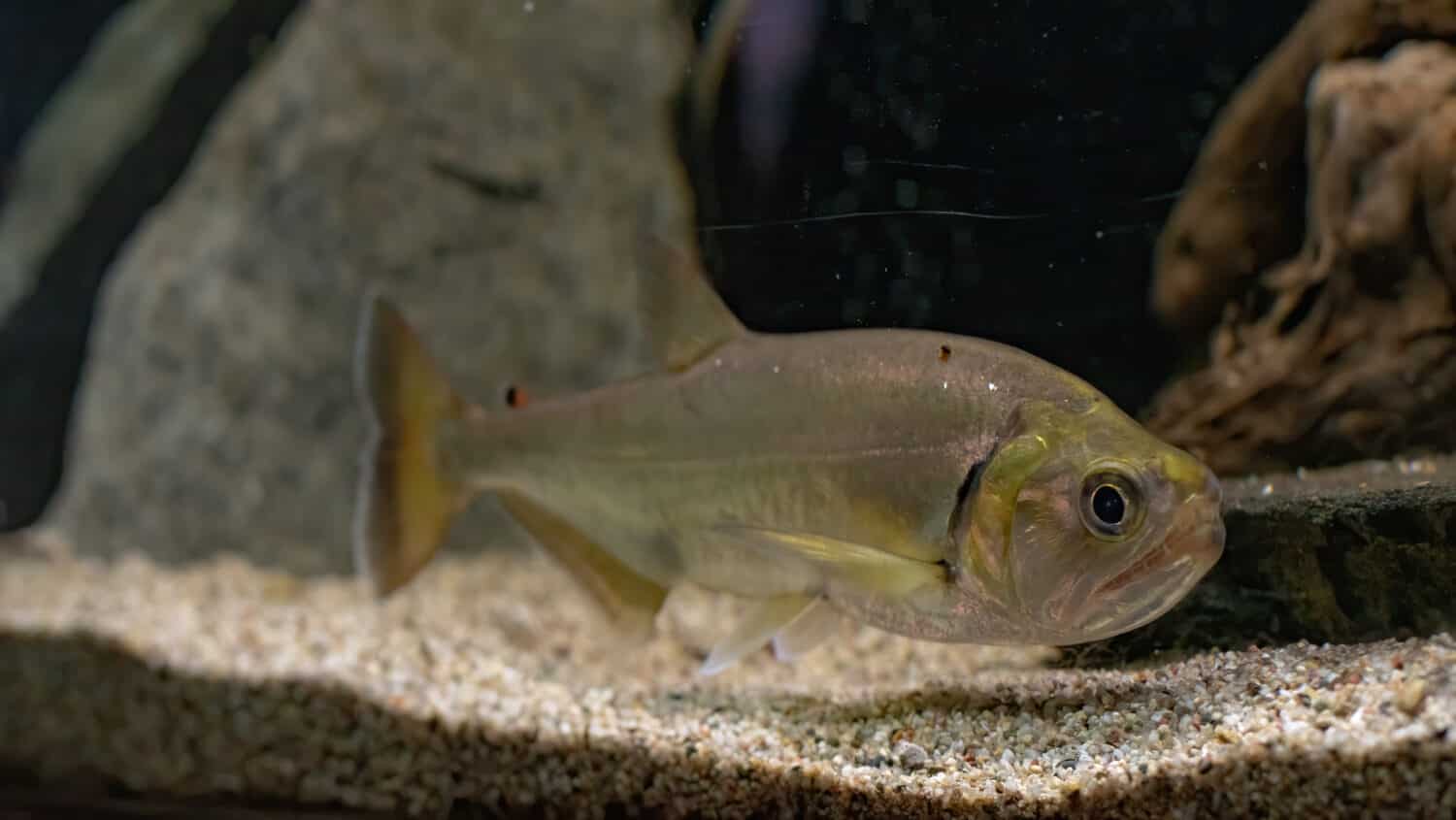
This species of fish requires a lot of upkeep when kept in an aquarium.
©Julian Popov/Shutterstock.com
A calm freshwater fish, the vampire pleco lives much of its life at the bottom of its tank. Vampire Pleco requires high levels of oxygen and powerful currents in aquariums because they dwell in rapids in their natural environment.
These fish favor silt and sand-covered surfaces. Fish like the vampire pleco cost approximately $60 and $100 for one fish. A fish’s price may increase significantly if it is huge and attractive like this one.
The sleek black or gray body of the Vampire Pleco is speckled with vivid yellow or white markings. It features a flat body, an extended tail, and a hard head. Female Vampire Plecos develop a rounder body shape as they age compared to males.
13. Vampire Tetra

Vampire Tetra’s teeth are one of the features that make it easy to identify.
©guentermanaus/Shutterstock.com
The predatory payara fish, often referred to as vampire tetra, are a type of dogtooth tetra. They live in the warm waters of the Amazon Basin and are constantly searching for their next victim. The upper jaws of a vampire tetra have openings designed for their incredibly sharp teeth that grow as they mature.
The purpose of these razor-sharp fangs is to kill their victim. These fangs, which resemble swords, can grow up to six inches long. A Payara fish has a robust long silver body. In pursuit of schools of fish, they strike quickly to seize their prey.
The swim bladder of vampire tetra vibrates to produce a variety of noises that they use to communicate with one another.
14. Venezuelan Grouper
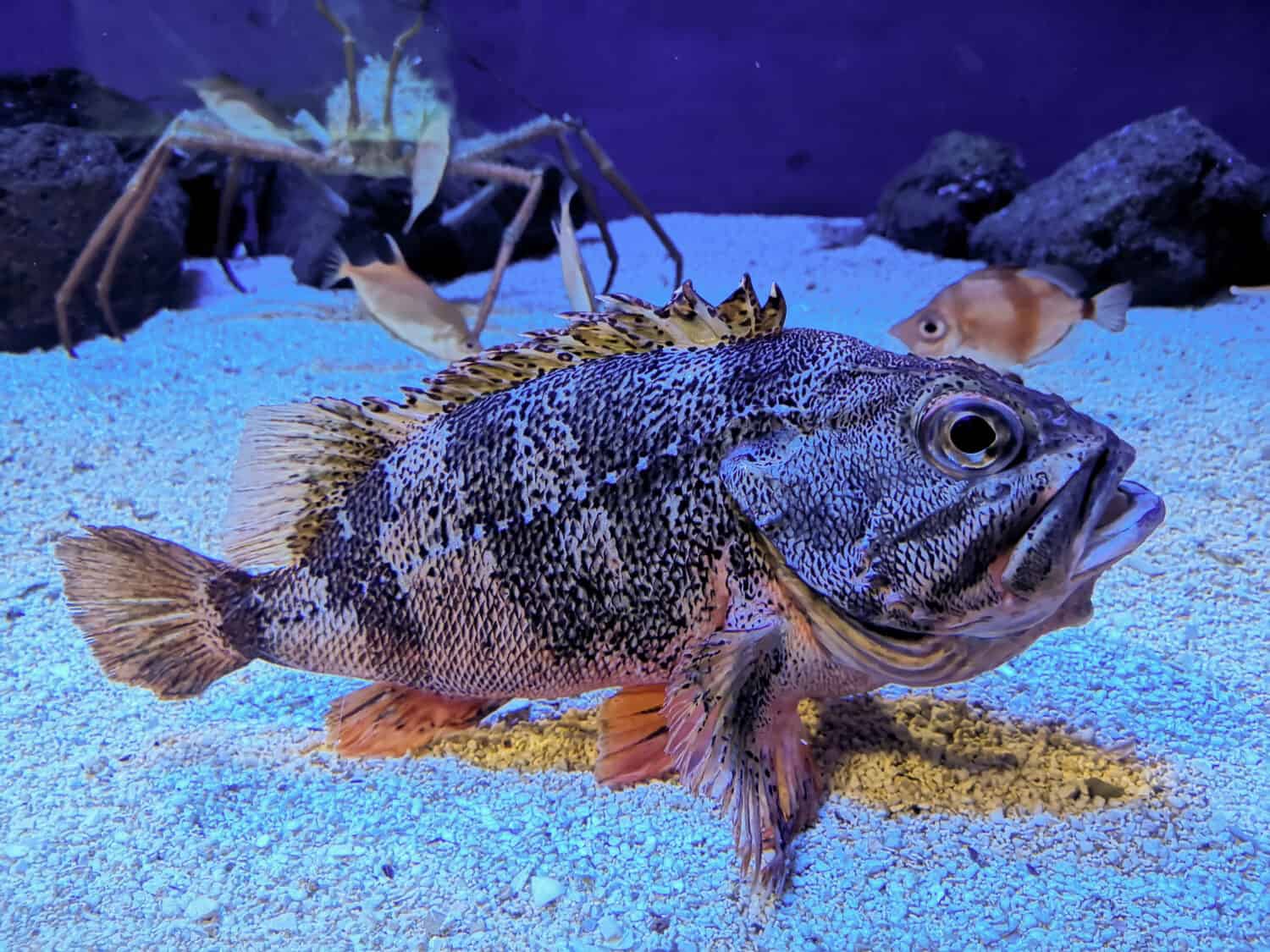
There are roughly 160 species of grouper fish.
©Kolf/Shutterstock.com
The Venezuelan grouper is found in northern South America where its range extends from Santa Marta in Colombia to the Paria Peninsula in Venezuela. On both soft coral beds and rugged coral reefs, the Venezuelan grouper calls home.
The smaller juveniles are typically found in shallow seas, on sandy ocean floors adjacent to and on coral reefs, and in seaweed, whereas the larger adults are typically found at greater depths.
The youngsters are olive green with sporadic brown dots on their bodies, whereas the adults have a light gray-brown color. Anal and dorsal fins’ soft-rayed portions have white margins with dark submarginal bands.
15. Viperfish
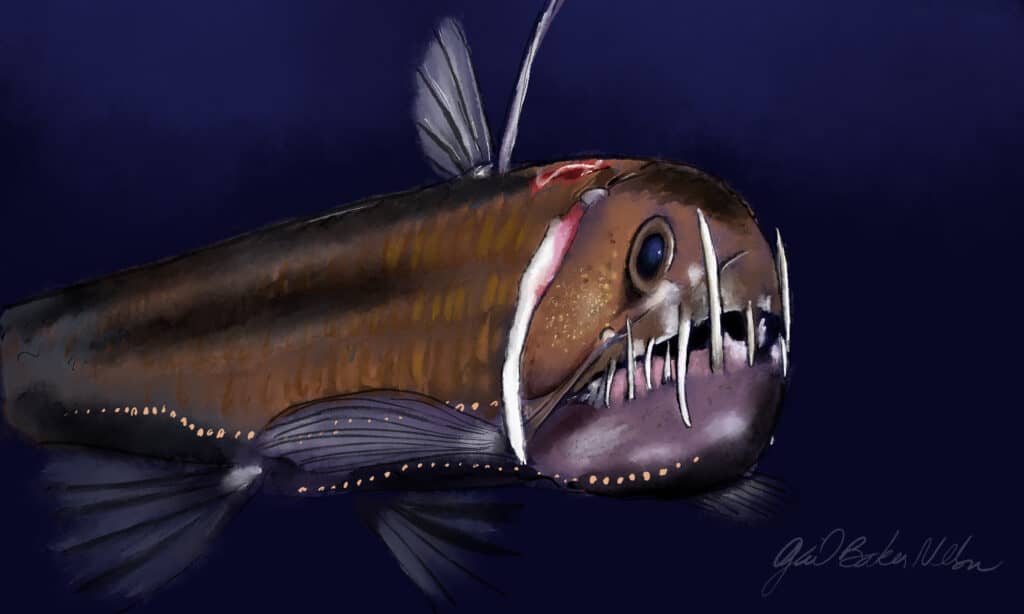
One of the fish with the most peculiar appearances in the deep water is the viperfish. The attention-grabbing features of this fish are a huge mouth and sharp, fang-like teeth. Actually, the size of these fangs prevents the teeth from fitting within the mouth.
Rather, they arc directly back in the direction of the fish’s eyes. Experts think that the viperfish impales a victim by darting toward them swiftly with the use of their sharp teeth. This terrifying-looking creature’s long dorsal spine terminates in a photophore, an organ that creates light.
The luminous organ is used by the viperfish to lure prey through a method called bioluminescence. It can be utilized as a fishing bait to draw in smaller predators by flickering the light on and off.
16. Vulgaris Anthias

These fish are also called marine goldfish.
©Arunee Rodloy/Shutterstock.com
The vulgaris anthias live throughout deep seas in Taiwan, the Philippines, and Japan. It is native to the western part of the Pacific Ocean. It is a little fish that can get as long as five inches at its largest.
Small and streamlined, the vulgaris anthias is a fish. Its body is reddish-orange, while the underneath is yellow. The body has a dark line spanning the length of it, and the fins are orange.
The Pseudanthias squamipinnis, which is very similar to the vulgaris anthias, resembles it in appearance quite a bit. The main components of the vulgaris anthias’ diet are zooplankton and tiny crustaceans.
17. Velvet Belly Lantern Shark

This shark is a type of dogfish.
©Andrea Izzotti/Shutterstock.com
One of the most prevalent deepwater shark species in the northeastern Atlantic Ocean, close to Iceland and Norway, is the velvet belly lantern shark. They get their name from the black underbelly that contrasts with their brown bodies.
It has a reasonably thick body, a snout that is quite long, and tail gills that are extremely small. These fish are bioluminescent, which means they have photophores that emit light. This produces a particular pattern over their sides and belly.
When sharks are young, their main sources of food are krill and tiny bony fish; as they get older, they switch to squid and shrimp. Like numerous other deep-sea organisms, these sharks have unique modifications both within and outside of their bodies for a higher likelihood of survival.
18. Variegated Shark
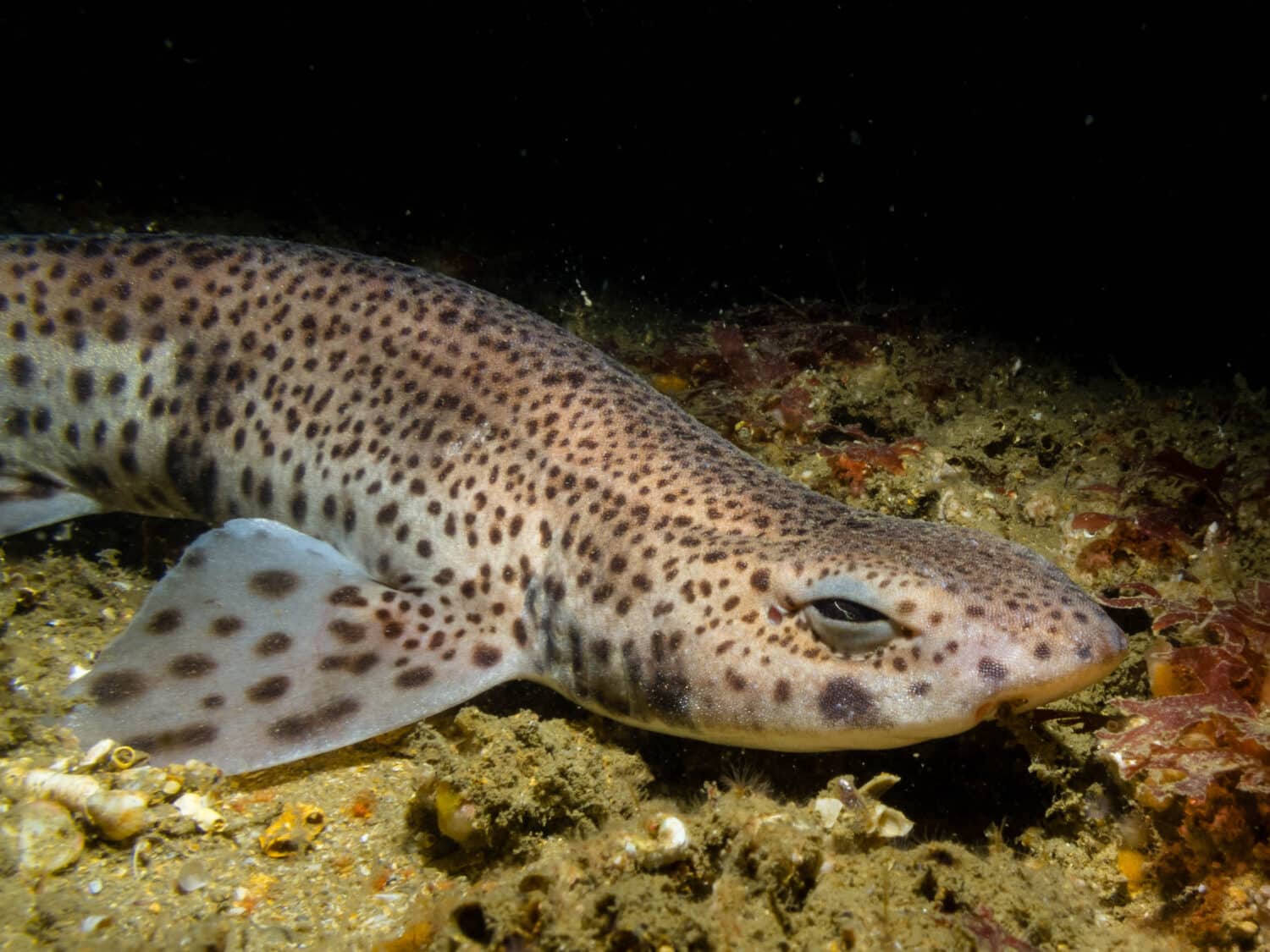
Catsharks always have a suspicious facial expression.
©Susana_Martins/Shutterstock.com
Along the coast of Australia throughout the Eastern Indian Ocean, there is a tiny catshark known as the Variegated Catshark. The complex color pattern of variegated catsharks features multicolored splashes around black dots.
Their dorsal fins are broader and more curved than their dorsal fin, which is short. They live in caverns and crevices in temperate waters as nocturnal species. The genetic makeup of the variegated catshark is mostly unknown.
19. V-Tailed Triggerfish

There are 40 species of triggerfish.
©Darren J. Bradley/Shutterstock.com
The V-tailed triggerfish also goes by the name Wedgetail Triggerfish. The coloration of the Wedgetail Triggerfish makes it easy to identify. It bears a black band running diagonally from the eye to the anal fin.
The caudal peduncle bears a black wedge-like mark. There are two yellow v-shaped markers preceding this. A blue line spans the top lip, while there are black stripes near the eyes. This fish lives in the Indo-West and Central Pacific’s warm marine waters.
20. Volitans Lionfish

Lionfish
can pose a threat to humans.
©bearacreative/Shutterstock.com
Volitans lionfish are also called common lionfish. This is one fish on this list that you’ve likely seen in an aquarium or in a nature documentary. The venomous spines on their fins, which can cause severe but seldom fatal stab wounds, are characteristic of lionfish.
The fish have lengthened dorsal fin spines and larger pectoral fins, and every species has its own distinctive arrangement of pronounced zebra-like stripes. This fish spreads out and shows off their fins when startled, and if forced further, they will come out and strike with their dorsal spines.
The Largest Fish That Starts With V
When it comes to the biggest fish that starts with V, this crown goes to the Vanjaram. More commonly known as Indo-Pacific king mackerel, this fish can weigh up to 100 pounds! These massive fish can grow to be over five feet long and live for nearly 20 years!
Summary of Fish That Start With V
| Common Name | Scientific Name |
|---|---|
| Vagabond Butterflyfish | Chaetodon vagabundus |
| Vermillion Rockfish | Sebastes miniatus |
| Violet Damsel | Neopomacentrus fallax |
| Violet Goby | Gobioides broussonnetii |
| Velvet Whalefish | Barbourisia rufa |
| Vanjaram | Scomberomorus guttatus |
| Virgin Spinedace | Lepidomeda mollispinis |
| Vampire Pleco | Leporacanthicus galaxias |
| Victoria Stonebasher | Marcusenius victoriae |
| Volga Undermouth | Chondrostoma variabile |
| V-Lip Redhorse | Moxostoma papillosum |
| Vancouver Lamprey | Lampetra macrostoma |
| Vampire Tetra | Hydrolycus scomberoides |
| Venezuelan Grouper | Mycteroperca cidi |
| Viperfish | Chauliodus |
| Vulgaris Anthias | Pseudanthias vulgaris |
| Velvet Belly Lantern Shark | Etmopterus spinax |
| Variegated Shark | Labeo variegatus |
| V-Tailed Triggerfish | Rhinecanthus rectangulus |
| Volitans Lionfish | Pterois volitans |
The photo featured at the top of this post is © guentermanaus/Shutterstock.com
Thank you for reading! Have some feedback for us? Contact the AZ Animals editorial team.







